1. Introduction
Adjectives are integral elements in linguistic structures as they help identify, describe and modify nouns. Structures with adjectives tend to present additional and important information with respect to the shape, size, colour, physical as well as abstract properties of an individual or an object. Thus, the following sentence
1) I met a beautiful, blonde, American young lady
is regarded as providing a more precise and informative description of a lady than 2).
2) I met a lady.
An adjective usually occurs with a head noun and constitutes part of a noun phrase. It may be positioned before or after the modified noun or pronoun in English. In Arabic, an adjective normally occurs after the noun it modifies as in
3) baytun kabīrun
a house big
a big house
The present paper focuses on a frequent use of adjectives in which an adjective occurs solely without a head noun. This type is common in marketing where more precisely an adjective represents or stands for the name of a certain product. This use of adjectives is recurrent worldwide. The main objective of this study is to assert that adjectives can be utilized as powerful persuasive tools in certain contexts such as marketing to attract the attention of and convince consumers to purchase specific products. The persuasive function of adjectives in this case is performed through deploying various semantic classes of adjectives such as those shown later in the analysis. The full list of semantic classes of adjectives in GermaNet1 is available in Appendix 3.
The paper is divided into five sections. The second sheds some light on some aspects of adjectives such as definition, function, form and position in English and Arabic. The third is devoted to the use of adjectives in marketing and advertising. The fourth represents methodology and data analysis which is further subdivided into three parts followed by the conclusion.
2. Some Aspects of Adjectives
2.1. Definition
1GermaNet is a lexical semantic net that groups German nouns, verbs and adjectives that express the same notion into synsets and specifies the semantic relations between the synsets. It has been developed by the Computational Linguistics Division of the Linguistics Department, University of Tübingen in 1997.
Chalker (1984: p. 162) notes that “A traditional definition of an adjective is that it says what somebody or something is like”. Grammatically speaking, a person or a thing is represented by a noun or a pronoun. Hurford (2000: p. 8) presents a more detailed definition of it as “a word typically used to modify a noun, and describes some property of the thing referred to by the noun, such as its shape, colour, age, value, size, origin or the impression it gives”. Dixon (2004) believes that semantic types form an integral part of identifying adjectives. Dixon (2004: pp. 3-4) states that
1) There are four core semantic types, which are typically associated with both large and small adjective classes.
a) DIMENSION―“big”, “small”, “long”, “tall”, short”, “wide”, “deep”, etc.
b) AGE―“new”, “young”, “old”, etc.
c) VALUE―“good”, “bad”, “lovely”, “atrocious”, “perfect”, “proper(/real)”, etc.
d) COLOUR―“black”, “white”, “red”, etc.
2) A number of peripheral semantic types are typically associated with medium sized and large adjective classes.
e) PHYSICAL PROPERTY―“hard”, “soft”, “heavy”, “wet”, “rough”, “strong”, “clean”, “hot”, “sour”, etc.
f) HUMAN PROPENSITY―“jealous”, “happy”, “kind”, “clever”, “generous”, etc.
g) SPEED―“fast”, “quick”, “slow”, etc.
In Arabic one finds that an adjective is identified in a similar fashion. Thus, Al Maany online dictionary defines an adjective as “a word that indicates a quality of the person or thing referred to by a noun-quality regarded as a natural or typical part of somebody or something”. Moreover, Al-hashimi (1935: p. 280) defines an adjective as “a subordinate element that shows some properties of its head noun and completes its meaning”. In both languages, an adjective is expected to occur with the noun it modifies.
2.2. Function
The function of an adjective is entailed in almost all the definitions cited above.
Furthermore, MacFadyen (n.d.: para.1) defines the function of adjectives as “describing, identifying, or quantifying words”. Hobi (2011) notes that adjectives in Arabic describe nouns and specify some of their qualities. Thus adjectives in English and Arabic have similar functions.
2.3. Form
In English, adjectives cannot be said to have a characteristic form as some of them end in suffixes such as able, ous, ful or ish as in accountable, generous, skilful and childish. Some prefixes like un or in or suffixes like less carry a negative meaning as in unhappy, incomplete and hopeless. The form can be misleading as one word may be an adjective or an adverb. Thus, hard may be an adjective or an adverb. It is the context in which a given word is used that determines whether a word belongs to this or that word class. The form of an adjective may display the positive, comparative or superlative degree.
In Arabic, Wright (1996: p. 140) notes comparative and superlative forms in Arabic are commonly known as ᾽f῾al ᾽ttafḍīl, the form ᾽f῾al denoting preeminence as in ᾽ǧmal, more beautiful or ᾽al᾽ǧmal, the most beautiful. The word “min”, “more” and the article ᾽al, “the” appear in comparative and superlative structures respectively. Hobi (2011) notes that Arabic adjectives are similar to nouns in almost every aspect. Thus they are inflected for number, gender and case. Adjectives may be derived from nouns or verbs; adding the suffix “I” to a noun can form an adjective as in miṣri, Egyptian which is derived from miṣr, Egypt. The adjective kabīr, big is derived from the verb kabura, to become big.
2.4. Position
In English, one classification of adjectives is that between attributive and predicative adjectives. Hurford (2000) states that the distinction between them relates to position. The former refers to an adjective placed before the noun it modifies whereas the latter follows the head noun. Kroeger (2005) points out that adjective modifiers in English normally occur before the head noun. Leech & Svartvik (1975) hold the view that some adjectives can only be used in attributive position. This can be found in the case of adjectives that are related to adverbials as in “A hard worker; Someone who works hard”. By contrast, some adjectives can only be used in a predicative position as in “You look pale; She felt faint”.
Abdullah and Frost (2005) add that there are some adjectives such as “good” may occur in either position.
Amer (2012: p. 15) asserts that “Arabic adjectives agree with the noun they postmodify in gender, number, case and definiteness/indefiniteness”. Consequently, Arabic adjectives occur in a post-nominal position even if they are used attributively in the sense that they identify and describe head nouns.
It is quite apparent from the preceding account that adjectives in English and Arabic are assumed and expected to occur with the head nouns they modify. The current paper offers a special use of adjectives in which they appear solely without any preceding or following head nouns. The following section handles the use of adjectives in marketing and advertising which represent the context from which the analysed data is collected.
3. Adjectives in Marketing and Advertising
The data to be analysed is represented by adjective phrases being employed as product names in marketing. Lovering (n.d.: para.2) identifies marketing as “The process of preparing your product for the marketplace”. It involves design elements like colour and logo which in turn include the product name. Therefore it is marketing that defines a brand. Closely related to marketing is advertising which is considered part of marketing and they are similar in that they attempt to reach the same end of convincing consumers to buy products. Advertising is the process of making your product and service known to the marketplace through print, television, radio or the Internet. Adjective phrases in this context have a specific function to perform which is quite different from their conventional and ordinary function mentioned above. This point is clarified in the following account. Lewis (as cited in Schmitz & Meb, 2008: p. 1 ) states that the main purpose of advertising is “to attract the consumer, to create an interest for the product or service, to make the recipient desire the advertised product and―finally―to induce an action, i.e. the purchase of the product”.
Leech (1966) notes that in commercial ads, product or service suppliers attempt to persuade consumers to buy their product rather than other products. One of the main tools employed to achieve this goal is the use of adjectives. Similarly Kokemuller (n.d.: para.1) assumes that the use of adjectives in advertising is to highlight the benefits and advantages of a certain product to make it appeal to targeted customers. According to Leech (1966) good, better and best are among the most frequently used adjectives to describe brands. Better and best are competitive words that suggest that the advertiser’s brand is either better than competing options or the best available product on the market.
Several of the most commonly used adjectives point to timeliness, such as with perishable goods or products that deteriorate with age. Fresh, delicious, clean and bright all imply a product performance at optimum levels. Fresh and delicious are terms often used by restaurants or supermarkets to describe food offerings. The term clean may be used to depict the like-new condition after a product is washed or the results of using cleaning products at home. Duistermaat (n.d.: p. 5) states that sensory adjectives are mostly used for physical products. She also adds that such adjectives activate different areas in the brain. Unlike the use of such adjectives in data analysis of the current paper, she refers to adjectives as co-occurring with the products they describe.
The accounts outlined above ascertain the assumption that adjectives in marketing are indispensable powerful persuasive tools.
Gradability proves to be important to naming some products as will be shown later through data analysis. Breban (2010) assumes that gradability is a feature that applies to qualities displaying different degrees on a scale. According to Breban, an adjective that designates a gradable quality displays different degrees of this quality. Gradability can be expressed in two ways; adding a strengthening element like very or so or using comparative and superlative forms of adjectives as exemplified in “very/so tall taller, tallest”.
Kennedy and McNally (2005) (as cited in Kennedy & McNally, 2008: p. 8 ) argue that very boosts the value of a relative standard. A tall person is taller than those having a certain average of length but a very tall person is compared only with tall persons. Moreover, Doetjes (2008) states that degree expressions can take various forms of modifiers of equal degree (as, even), excessive degree (too), comparative (-er), superlative (-(e)st), and high degree (very).
4. Methodology and Data Analysis
The current study is a qualitative descriptive research that depends on analyzing data collected from several online sites referring to names of commercial products utilized in different countries. The samples analysed are written in Arabic and English. It is noteworthy that English adjective phrases are not confined to naming products in English speaking countries. Several countries including Arab ones use English as shown below through data analysis.
Concerning their structure, the 66 samples are categorized into one word adjective phrases and multiple word adjective phrases. The latter is further subdivided into phrases with two adjacent adjectives, compound phrases and phrases with an adverbial modifier.
The use of adjectives in this particular context is customer-oriented as it is primarily meant to attract the attention of and persuade customers to purchase a certain product. The analysis focuses mainly on highlighting the linguistic, pragmatic, cultural and social features and aspects associated with the names of products that render them worth buying. The following part represents the first of three parts of data analysis.
4.1. Some Linguistic Aspects
Adjectives in this specific context are used for naming brands and products of different types. This is a worldwide phenomenon as obvious from the samples presented. Table 1 displays the structure and the semantic classes of adjective phrases.
It is quite obvious that unlike their ordinary function of modifying nouns in noun phrases, adjective phrases in this context are used independently. It is also clear that the same adjective is employed to name several products of a different nature as stated in Table 1. The structure of adjective phrases falls into two types; one word phrases and multiple word phrases. In both cases, the semantic class highlights the salient features of a product that render it desirable and worth buying. Thus, the adjective phrases šahiya, ladīda, nice, crunchy and crispy and tasty are used for food products. Similarly, the adjective phrases perfect, slim perfect, white perfect, clean and clear, clear and smooth name cosmetics and stress their effect on one’s appearance.
One adjective can be used for products that are different in nature as with the adjective nice which refers to food products in 34 and 35, but it stands for cosmetics in 55 and 56. Consequently, it belongs to the perceptional-taste semantic class in the former case while it refers to the body-related-appearance semantic class in the latter. The same analysis applies to the adjective pure in 15, 17, 18, 19.
Antonymy is found between national in 5 and universal in 3. The former is meant to show one’s sense of pride of manufacturing goods in his country. The latter implies that its products are used on a large scale as they meet high and outstanding standards of quality that are acknowledged internationally. Antonymy is not only manifest in the names of different products such as national and universal but in the same product as in icy hot in 46. It is a pain relief product which when applying it the user first feels cool and then feels heat as it relaxes the pain.
Gradability can be traced in the use of the adjective best which specifies a kind of juice in 8. The way it is used does not comply with the usual superlative structure because the definite article should occur before the adjective best. The violation of correct grammatical considerations does not hinder the intended and desired effect of showing the product as being better and more advantageous than its competitors. The concept of gradability is also evident in the use
![]()
![]()
Table 1. Semantic classes of adjectives.
of the degree intensifier so for three products in 62 - 64 which asserts the taste is not only crispy or delicious but so crispy and delicious. The use of the adverb ever with the adjectives pure and ready in 65 - 66 implies that the capacity and performance of these products is of a permanent nature.
The main aim of using adjectives to name products is to impress and capture the attention of the consumer. Stating what the product explicitly refers to is unnecessary as the consumer precisely knows the specific product being talked about. This can be regarded as a concise, concentrated and economic way of naming commercial products. The second part sheds some light on the interrelationship between language and its users in this specific context.
4.2. Pragmatic Aspects
Yule (1996) notes that pragmatics involves the interpretation of what people mean in a given context. It also considers how speakers organize what they want to say in accordance with who they are talking to. The recipients in this specific case are represented by consumers. This part refers to some pragmatic aspects.
In Table 1, adjective phrases in 45 - 61 are regarded as having a more powerful impact on the recipient than those in 1 - 44 as each of them includes two adjectives. Consequently, there is a reference to two attractive features instead of just one. For instance, food is not only organic as in 21 but pure organic as in 39. Similarly, one’s hair is not merely clear as in 20 but clean and clear as in 59.
One of the main purposes of using only an adjective phrase to name a product is to stimulate the recipient’s thinking to configure a broader view of the product’s features, benefits and advantages than is explicitly stated. Thus, for example, fresh implies having fresh air if one buys this fan or fresh food and taste when he has this fridge. Another instance is that of ideal in 2 that urges one to buy its home appliances to get ideal service, shape, quality or even price. It may also imply that this product is ideal for one’s life or needs. A third is that of “true” in 20 which invites the recipient to expect getting true skin care or true results. Finally, royal in 25 is an adjective that indicates a sense of luxury and comfort. The researcher strongly believes that this open-endedness feature associated with the use of adjectives is intentional.
An adjective may refer to the substance from which a product is made as in milky in 9 which indicates that it is made from plenty of milk. Sometimes the choice of an adjective matches the shape of a certain product as in bubbly in 32 and 33. The colour adjectives orange in 1, greeny in 7 and white in 48 are successfully selected; the first attempts to persuade consumers that the future of these products is bright, the second promises the addressee to have products that are fresh and natural and the third confirms that one attains a white perfect complexion when using this cream.
Some adjectives are sensory. This is illustrated by fluffy in 23, clean and clear in 59 and so delicious in 64. These are pertinent to the senses of touch, sight and taste respectively.
The vital and effective role played by adjectives in commercial advertising is embodied by the change of the name of a leading Egyptian food industries company from the NP ᾽rrašīdi ᾽almizān into the adjective phrase ᾽l᾽ṣli meaning the original in 24. This company was founded in 1888 and the new name is most likely attributed to the company’s wish to assert its long experience, efficiency and high esteem in the market especially that there have been so many rivals and competitors.
The choice of a specific adjective to identify a product suits its nature as shown in Table 2 below.
The pragmatic dimension emphasizes the vital role played by adjectives as powerful persuasive tools. The third part deals with some cultural and social aspects of the use of adjectives that also contribute to reaching the intended goal of convincing people to buy certain products.
4.3. Cultural and Social Aspects
Some adjectives identify higly specific groups as in the case of 37 and 38 represented by maṣrāwi meaning Egyptian and ᾽hlāwi meaning mostly a fan of Al-Ahly sporting club. Such adjectives appeal to one’s senses of devotion to and pride of belonging to a certain nationality or a particular sporting club. This interpretation applies to “national” in 5 as well.
The selection of a certain adjective may be driven by a common cultural belief
![]()
Table 2. Suitability of the choice of adjectives.
as in the case of items 21 and 39 which use the adjectives “organic” and biti meaning home-made. Europeans and Americans are interested to a great extent in organic food products which are devoid of chemicals that may be harmful to one’s health. On the other hand, in the Arab world in general and in Egypt in particular describing food product as biti or home-made has a favorable effect on the recipient. This is attributed to the fact that home-made food products are deemed as cleaner and healthier than those produced by factories.
2The brand consultancy Wolff Olins was charged with designing the brand values and logo and advertising agency WCRS created the Orange slogan “The future’s bright, the future’s Orange”.
3The company was founded in September 1912 and takes its name from one of its founder’s first inventions, the Ever-Sharp mechanical pencil.
It is quite obvious that adjectives in English are largely selected for the names of companies or products worldwide as for example in 6, 7, 9, 52, 55 and 68. The use of adjectives is not only limited to naming products but is extended to cover the names of manufacturing factories, corporations and firms worldwide. Thus, for instance, orange2 stands for a telecommunications firm in Britain, sharp3 refers to a Japanese corporation that designs and manufactures some electronic products and fresh is Egyptian. Similarly, brands are produced by manufacturers in many countries and continents. For example, home appliances under the name of national belong to the Japanese Matsushita Electric Industrial Company, pure juice is supplied by the Egyptian Juhayna Food Industries Company, pure herbal active ampoules are produced by Green Peel Cosmetics Company in Germany.
5. Conclusion
The current paper presents and scrutinizes a ubiquitous use of adjectives in marketing to name and label products of different types in English and Arabic. The function of adjectives in this case is to impress and tempt addressees and more precisely consumers to purchase a product. Generally speaking, adjectives are dealt with from semantic, morphological or syntactic perspectives as stated in Section 2 above. In this particular paper, the use of adjectives focuses on linguistic, pragmatic, cultural and social aspects to display how linguistic elements are exploited in given contexts for specific purposes.
It is patent that some names do not only identify products but reflect some socio-cultural beliefs as well as in the case of 21 and 39. This is regarded as an intelligent way of addressing the targeted audience belonging to a certain culture. Thus the use of biti or homemade is not expected to impress consumers in western cultures as they use ready-made or half cooked meals to a greater extent than in oriental or middle east countries.
Sometimes adjectives display physical aspects of products like shape in 32 - 33, colour in 1, 7 and 48 and length in 45 while others refer to abstract attributes such as fine in 22, hearty in 26 - 28 and lovely in 56. In other words, adjectives cover nearly all the aspects of products.
Through the analysis, one discerns that adjectives are powerful and efficacious to the extent that producers and advertising agencies are urged to use them solely to name products. Without adjectives, much of a consumer’s interest in a product would be lost. This approach is ubiquitous and prevalent. Adjective phrases in this particular context can be conceived as economic and concise tools conveying strong messages with the aim of persuading the targeted audience to purchase products of various types.
Appendix 1
Adjectives in GermaNet. http://www.sfs.uni-tuebingen.de/lsd/adjectives.shtml
http://en.wikipedia.org/wiki/Orange_%28UK%29
http://www.sogarab.com/ad-102183.html
http://forums.fatakat.com/thread2224836
http://www.fresh.com.eg/
http://www.universalgroup.org/UniversalGroup_v10/egypt/en/homepage/
http://www.abunawaf.com/post-14252.html
http://forums.fatakat.com/thread2301352
http://forums.fatakat.com/thread4424965
http://www.radmangroup-ye.com/ar/?ContentID=56
http://www.panda.com.sa/dammam/food-products/oil-vinegars/shahea-corn-oil-1-8l.html
http://www.juhayna.com/ar/brands/product/102
http://www.vivawoman.net/2009/08/true-bio-skin-care-product-review/
http://www.amazon.com/Dr-Schrammek-Ampoules-Large-pored-Natural/dp/B00GV2EIB8
https://www.google.com.eg/search?bih=613&biw=1014&noj=1&tbm=isch&sa=1&q=photos+of+pure+products
http://shop.thepurebar.com/Chocolate-Brownie/p/PURE-001018&c=PureBar@Bars
http://www.beautyqueenuk.co.uk/2013_04_01_archive.html
http://beautyandlifestylehunter.blogspot.com/2013/04/product-review-nivea-visage-pure.html
https://www.pinterest.com/join/
http://saigonfmcg.com/shampoo-clear-nourished-smooth-silky-370g.html#.VF_dbcKSx5s
http://www.treehugger.com/green-food/kelloggs-introduces-organic-cereals.html
http://beta.waffar.com/hypermarkets/fine-fluffy-tissues-2.html
http://alakhaween.blogspot.com/2013_01_01_archive.html
http://elforsan-eg.com/
http://www.amazon.co.uk/white-Hearty-super-lightweight-Japan/dp/B004TI4O9W
http://www.mstaml.com/1435417/perfect-products
http://www.towsure.com/product/Silky_Caravan_and_Boat_Cream_Cleaner_480ml
http://www.easyproducts.co.nz/Site/Products/Automotive_Degreaser.ashx
http://www.underconsideration.com/brandnew/archives/nice_but_not_too_nice.php#.VF_mkcKSx5s
http://www.zalloumgroup.com/?q=products/biscuits/plain-biscuits/ar&language=ar
http://forums.fatakat.com/thread3057211-7
http://forums.fatakat.com/thread3935956
http://www.amazon.com/Icy-Hot-Medicated-Patch-Large/dp/B000VS5NEY
http://www.tga.gov.au/alert/majestic-slim-perfect-capsules
http://www.ij.co.za/ij-light-crispy/
http://www.panda.com.sa/qatif/food-products/frozen-food/hot-crispy-country-fries-750g.html
http://shop.countdown.co.nz/shop/ProductDetails?Stockcode=31298&name=clairol-nice-n-easy-hair-colour-light-ash-blond
http://www.maggi.co.nz/products/so-crispy/classic-chicken/
http://www.cromwell.co.uk/EVR9040040K
Appendix 2
Transliteration Table
Transliteration symbols of Arabic letters.
᾽: أ
b: ب
t: ت
ṯ: ث
ǧ: ج
ḥ: ح
ḫ: خ
d: د
d: ذ
r: ر
z: ز
s: س
š: ش
ṣ: ص
ḍ: ض
ṭ: ط
ẓ: ظ
῾: ع
ġ: غ
f: ف
q: ق
k: ك
l: ل
m: م
n: ن
h: ه
w: و
y: ي
Short Vowels
a i u
Long Vowels Compound Vowels
ā ī ū aw ai
The DIN 31635 standard for the transliteration of the Arabic alphabet is followed.
Appendix 3
This Table is available at http://www.sfs.uni-tuebingen.de/GermaNet/adjectives.shtml.
Appendix 4
1.
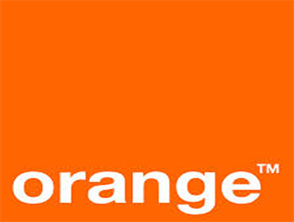
2.

3.

4.
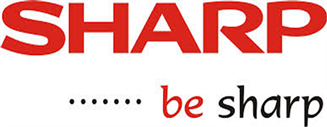
5.
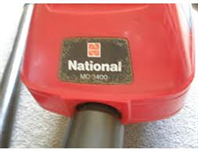
6.
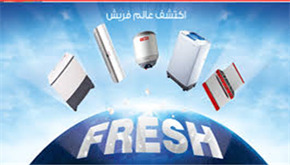
7.
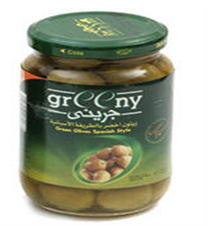
8.
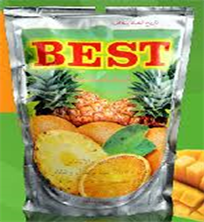
9.
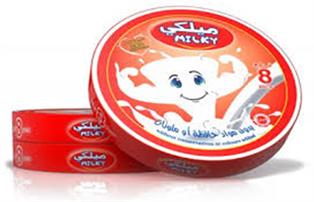
10.

11.
![]()
12.
![]()
13.
![]()
14.
![]()
15.
![]()
16. Bio skin care cleanser
![]()
17. Herbal active ampoules
![]()
18. spirulina powder and spirulina crunchy
![]()
19. beauty products
![]()
20.
![]()
21.
![]()
22.
![]()
23.
![]()
24.
![]()
![]()
25.
![]()
26. for all hair types
![]()
27. children’s modelling clay
![]()
28.
![]()
29.
![]()
30.
![]()
31.
![]()
32.
![]()
33.
![]()
34.
![]()
35.
![]()
36. concentrated car wash
![]()
37.
![]()
38.
![]()
39.
![]()
40.
![]()
41. West Balkan
![]()
42.
![]()
43. whole grains oats flakes
![]()
44.
![]()
45. ice pop
![]()
46.
![]()
47.
![]()
48.
![]()
49. chocolate brownie
![]()
50.
![]()
51.
![]()
52.
![]()
53.
![]()
54.
![]()
55.
![]()
56.
![]()
57. facial wipes and facial wash
![]()
58. cleansing lotion and cleansing toner
![]()
59
![]()
60.
![]()
61.
![]()
62.
![]()
63.
![]()
64.
![]()
65. volume hair care products
![]()
66.
![]()